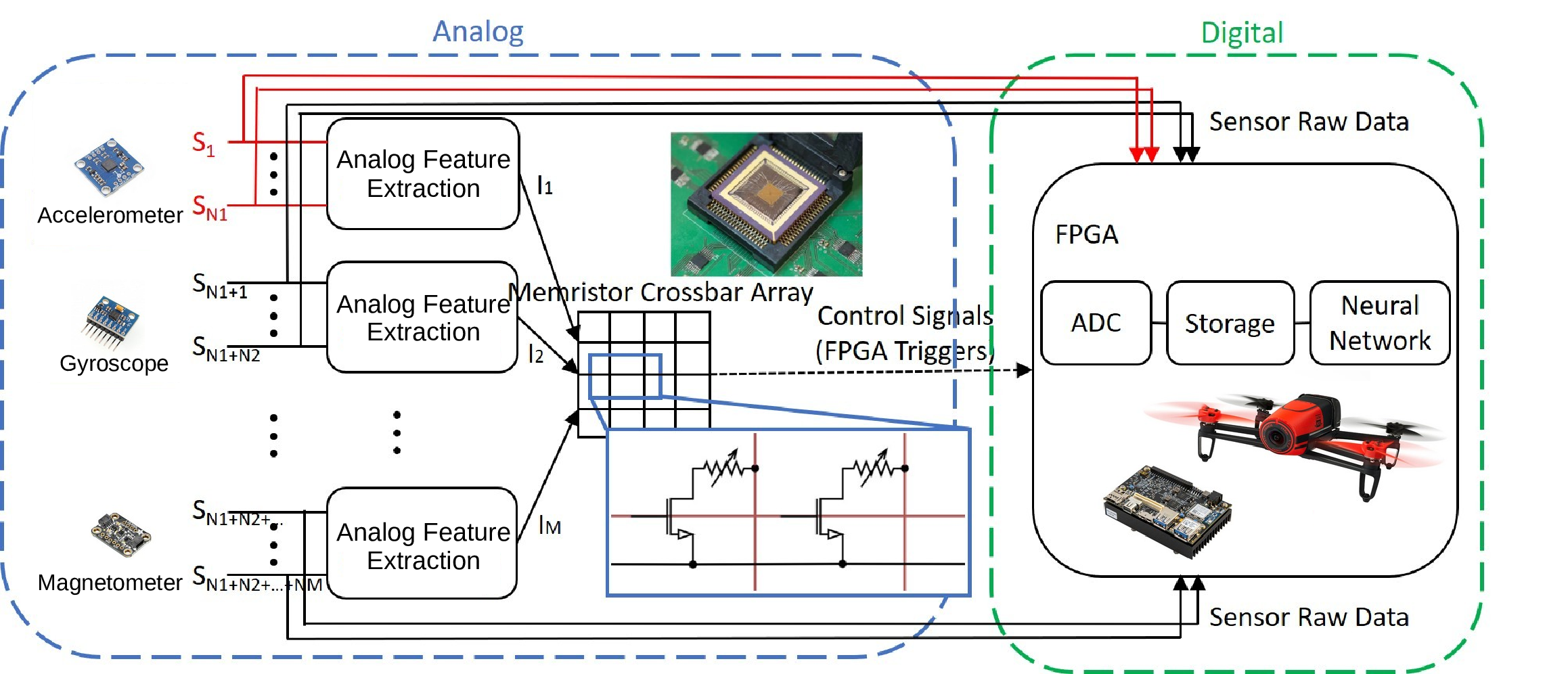RTML: Real-Time Autonomic Decision Making on Sparsity-Aware Accelerated Hardware via Online Machine Learning and Approximation
Research | | Links:

Real-time smart and autonomic decision making involves two major stages—(1)~sensing (of sensor data and then transformation into actionable knowledge) and (2)~planning (taking decisions using this knowledge). These two stages happen in both internal and external operations of an Intelligent Physical System (IPS). In case of internal operations, sensing refers to reading data from on-board sensors such as an Inertial Measurement Unit~(IMU) and planning refers to smart execution of the firmware running on the IPS. In case of external operations, sensing refers to sensing data from externally-mounted sensors such as cameras or close-range laser scanning based on Light Detection And Ranging~(LiDAR) and planning refers to executing the software that constitutes an application (e.g., operating the IPS to execute human-provided top-level instructions).
The challenges faced by an IPS include the following: In the sensing stage, it should be able to cope with different forms of uncertainty, especially data and model uncertainties. Data uncertainty refers to noise associated with sensor and actuator data (control input), which could be due to faulty sensors/actuators or malicious sensors/actuators that have been hacked. Model uncertainty refers to the uncertainty in what model needs to be used to process the data and generate outputs. This can be distinguished into two types—parameter and model uncertainty: knowing the model but not its parameters refers to parameter uncertainty, whereas not knowing the model altogether refers to model uncertainty. Model/parameter uncertainties are especially important to an IPS system such as a drone because of the uncertain and dynamic environment in which it operates. Unlike chemical plants where the process/environment are fully modeled/controlled, it is difficult to model the environment in case of a drone. Environmental uncertainties are the source of model and parameter uncertainties, and can be either accidental or malicious. Examples of the former are hits of a drone by a bird resulting in breaking of blades, engine failures, etc. or real-life sudden situation turns such as wind changes—all events that cannot be easily predicted. The latter encompasses intentional attacks such as a compromised/hacked sensor resulting in data uncertainties. Hence, model and parameter uncertainties are caused by the (non-stationary) changing environment in which the IPS (drone) acts. Notice that the degree of uncertainty in all sources (data, models, and parameters), in general,changes with time, making it another challenge in itself. The first part of dealing with uncertainties is to identify the type of problem at hand. As such the IPS should be reflective in that it should be able to diagnose the problem, which determines what action to pursue later. For example, in case of a drone, the action to take differs between the cases of a gradual wind change and a malicious attack on the propellers causing an irregular Revolutions Per Minute~(RPMs) of the rotor blades (e.g., opposite direction/different RPMs). As part of being reflective, after problem diagnosis, the IPS should learn how to deal with these uncertainties using past experiences. Hence, it should be knowledge-rich to use probabilistic reasoning models (that can be developed from past experiences) to deal with such uncertainties.

